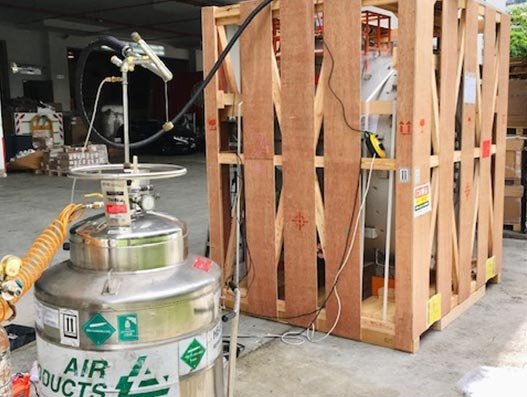
Hellmann moves critical medical supplies in and out of South East Asia
Hellmann is supporting its customers with urgent needs of importing or exporting medical supplies from South East Asia.

As of early April 2020, global air freight capacity has been reduced by 35 percent over last year. At the same time, transatlantic capacity decreased by 50 percent due to higher dependency on passenger flights for cargo. Although transpacific and Europe/Asia routes are less dependent on passenger-cargo space, their capacity reduction is close to 40 percent. And, with the peak of medical and healthcare manufacturing and distribution activities in South East Asia, it is stressing the capacity situation even more, resulting in backlogs. During this unprecedented period, Hellmann is supporting its customers with their urgent needs of importing or exporting medical supplies from South East Asia.
Christopher Schwarz, director at Hellmann Healthcare Logistics Asia, shares how Hellmann finds solutions for their global customers, “We operate a weekly charter connecting US, Europe, and China and plan to launch a similar weekly service between Europe and Singapore with feeder service to serve countries like Malaysia, Thailand, and Cambodia. We are also operating a rail service for medical devices such as gloves and protective clothing from Xiamen, China to Belgium. The transit time is around 18 days, which makes rail a great alternative to air freight when dealing with current backlogs”.
Given the current environment of supply chain disruptions, many exporters and importers are struggling to adapt to the new norm. Recently, a manufacturer of hand sanitizing soap based in Thailand reached out to Hellmann for help with transitioning a significant portion of their shipments to Japan from Sea to Air. Hellmann supported the customer with advice on how to properly package the goods, supervised the packaging process on-site and secured air freight capacity specific to the client’s needs.
In another example, Hellmann helped a hand sanitizer manufacturing company supply much needed alcohol-based hand gel to China despite the commodity being rated Class 3 Dangerous Goods, which posed restrictions to how this material could move as air freight. Due to the increase in blank sailings, sea freight was not a reliable option either. “Therefore, we’ve set up twice-a-week truck routes between China and Thailand, because we expect that, with production activities increasing in China, we will need to transport goods from China to Thailand as well. Looking at ‘now’ and also the near future, innovative solutions are a key to serving our customers during this difficult time,” adds Sachin Anand, managing director Malaysia/ regional commercial director South East Asia.
“Looking at ‘now’ and also the near future, innovative solutions are a key to serving our customers during this difficult time.”
Another example of Hellmann Healthcare team’s expertise was an extremely sensitive MRI unit movement from Japan to Myanmar. Under normal circumstances, these devices, which are filled with helium, are moved as oversized cargo by air freight, but in this case, the destination airport of Rangun International Airport could not support any freighter operations. “We arranged for the shipment to go by air freight from Japan to Singapore first, then trans-shipping the unit to our cross-dock facility at Changi Airport, where we carefully conducted a re-filling of helium before loading the device onto a 20-foot Open Top Container to be shipped sea freight from Singapore to Yangon. This delicate process was required because since helium is lost throughout transportation at an average rate of 3 percent per day. Since only a certain amount of helium can be used for shipping and the MRI magnet would suffer damages if the helium drops below a certain level, we have set up a route mapping and contingency plan to ensure smooth and expedited shipment handling,” says Schwarz.

